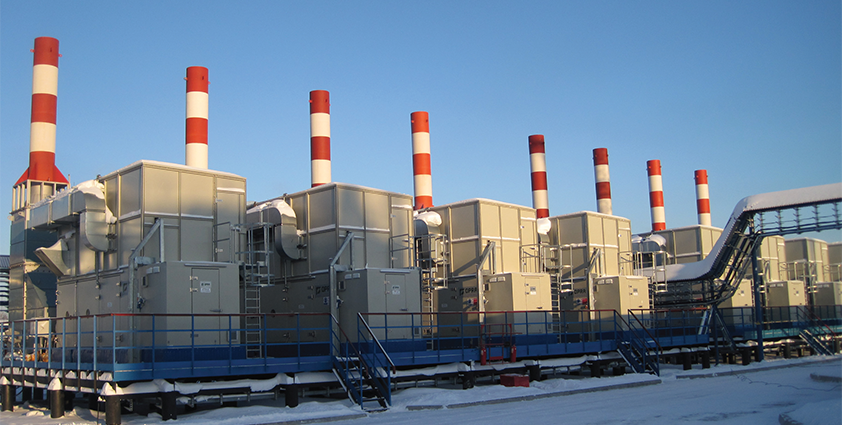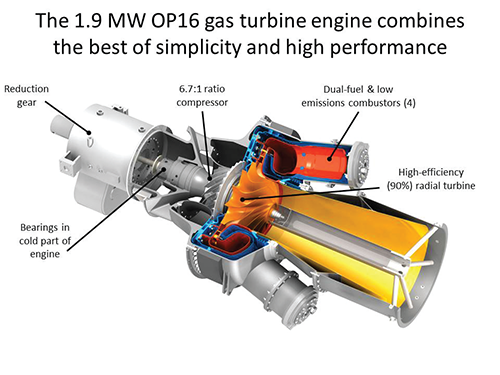
OPRA Turbines: Powering the Future with Low-Emission, High-Efficiency Gas Turbines
Powering the industry
OPRA Turbines manufactures advanced, low-emission generating sets using the OP16 series of gas turbines, providing 1.5-10MW power generation solutions for the oil and gas, marine, industrial and commercial markets.
European Oil & Gas magazine interviews Fredrik Mowill, CEO of OPRA Turbines.
Looking at the last couple of years, how has business been for the company?
“The first two OP16 generating sets were installed in 2005 at the Tedinskoe oil field, operated by Lukoil Sever in Northern Russia. OPRA has since sold around 70 generating sets. Customers include several major oil and gas companies operating in Russia, the North Sea and Brazil. Although the first installations were mainly for oil and gas applications, recent years have seen increasing opportunities within the industrial CHP and energy efficiency sector, especially in Europe, where emissions regulations and energy efficiency subsidies favour clean power such as that generated by OPRA’s turbines. As an example, three OP16 generating sets were sold to Germany and Romania the last month of 2011 for food and processing industries.
“2011 has also seen increasing business for the Service arm of the organisation. We had to wait longer than expected for the first major overhauls as the turbines have proven to be extremely reliable. The gas turbines installed at Tedinskoe as an example have been in operation for six years, building up an impressive performance record. They have each achieved 50,000 hours’ running time, working constantly on high-sulphur content wellhead gas, although 30,000 hours is the standard period between overhauls for most turbines. In fact one of the reasons OPRA turbines were selected was their ability to burn wellhead gas – associated gas from the oil well, which would otherwise be flared, thus eliminating wasteful flares.”
In terms of oil and gas where are you most active and why?
“In terms of oil and gas, we have been very active in Russia. The conditions in parts of Russia are an example of how oil exploration can be challenged by hazardous weather conditions and remote sites, increasing the need for reliable power, which matches well with the OP16 features.
“OPRA’s OP16 gas turbine is different from other turbines in the market: it possesses an allradial rotor construction, making it the simplest turbine engine around. It offers exceptional robustness and performance, compared with conventional axial turbines and reciprocating engines. The centrifugal compressor and the radial turbine components provide high thermal efficiency at a relatively low-pressure ratio of 6.7:1. This reduces the need for gas boost pressure. The OP16 has four can combustors, which, in addition to being able to burn different types of fuel, are easily accessible for inspection and maintenance. The radial turbine does not require cooling – the lack of cooling apertures eliminates clogging, reduces corrosion and allows the engine to run longer and on a wider range of fuels. The single stage all radial concept results in a compact design ideal for offshore sites where footprint and weight is critical.
 “Market demand and priorities differs somewhat between regions, however all or a combination of the following: Energy efficiency, the ability to burn a wide range of fuels or lowering emissions are important in OPRA’s biggest markets, namely Russia, Brazil and Europe. The company is working on a number of projects recovering the exhaust heat from the turbine. In oil and gas applications, the hot exhaust gases from OP16 sets can be used for processes and heating. Running an OP16 on flare gas eliminates wasteful flares while generating usable power and heat. Depending on the application, an OP16 turbine-based cogeneration system has an overall fuel utilisation of up to 90 per cent. At full load, approximately 5MW of heat is available in the clean exhaust gases and six tons of high-pressure steam can be generated.”
“Market demand and priorities differs somewhat between regions, however all or a combination of the following: Energy efficiency, the ability to burn a wide range of fuels or lowering emissions are important in OPRA’s biggest markets, namely Russia, Brazil and Europe. The company is working on a number of projects recovering the exhaust heat from the turbine. In oil and gas applications, the hot exhaust gases from OP16 sets can be used for processes and heating. Running an OP16 on flare gas eliminates wasteful flares while generating usable power and heat. Depending on the application, an OP16 turbine-based cogeneration system has an overall fuel utilisation of up to 90 per cent. At full load, approximately 5MW of heat is available in the clean exhaust gases and six tons of high-pressure steam can be generated.”
How important is R&D for the company?
“OPRA Turbines’ founder designed, developed and commercialised the first radial gas turbine for industrial use in 1963. The company benefits from 50 years of advanced patented gas turbine technology and has unique expertise in all radial gas turbine engines.
“The company’s modern test facilities and R&D department are based in Hengelo, the Netherlands. Here we strive to continuously further our technology. The nature of the gas turbine business requires continuous developments, increasing efficiency and minimising emissions. In addition to the allradial expertise, OPRA has excellent combustion technology. The design features allows for both the burning of flare gas in oil and gas applications and for bio fuels for the industrial sector. An effective combustion system also allows for low emissions, which is becoming increasingly important across the world.”
Does R&D work reflect the customers’ future needs?
“It is important to get feedback from our customers and to understand their needs. However, if you want to achieve breakthrough technologies the customer may not always provide the answers. When OPRA initially developed a product for the 2MW range, many felt this market was predominated by reciprocating engines and that turbines would be too costly and inefficient in this range. However, the OP16 has proven to be very competitive and with the increase in demand to run on off specification gases and for onsite power utilising both heat and power, as well as with tightening emissions regulations, OPRA has proven there is a big and growing market for this machine.”
In addition to the company qualities already mentioned, are there other core qualities that you feel sets OPRA Turbines apart from its competitors?
“Compared to other companies operating in our markets, OPRA Turbines as a smaller, independent company, has a more flexible and innovative approach than our peers. As most activities are located in one place all employees have a good understanding of the gas turbine business as a whole, which makes communication quicker and innovation easier and better.”
Looking to the future, where do you hope to see the company in three to five years?
“Following the economy and political tides, there are many developments. What is certain is that power demand is outstripping supply as resources are diminishing and countries with large populations previously without power are developing demand rapidly. Market turbulence and unpredictability may mean opportunities as well as challenges, but will certainly require flexibility and adaption to changes. Favourable energy trends for the company include the emphasis on energy efficiency, new fuel developments and new gas discoveries. The US is looking to become a gas exporter instead of a gas importer, with the implication that gas prices will remain low. Other countries too also see shale gas as a viable fuel source the coming years. This will need both developments of infrastructure and gas processing facilities and will favour gas as a fuel for consumers. Utilising flare gas continues to be important and emissions regulations will continue to spread across the world. Onsite power production and decentralised power are also trends that favour our product. In the next few years we expect to further penetrate our core markets in terms of both sales and after sales as well as increase our presence in markets we have recently entered. We expect to provide more power to more people.”
Opra Turbines
Services: Power generation systems